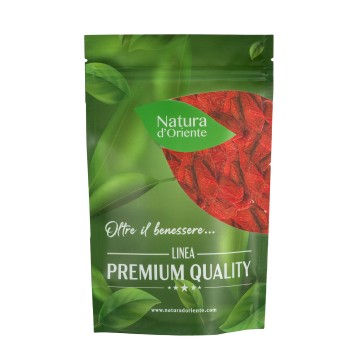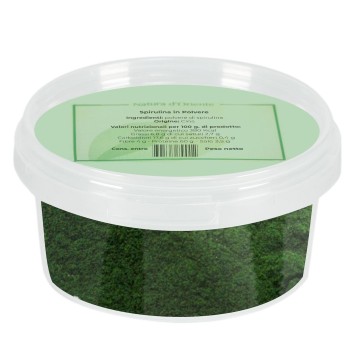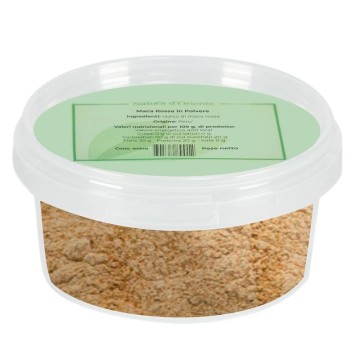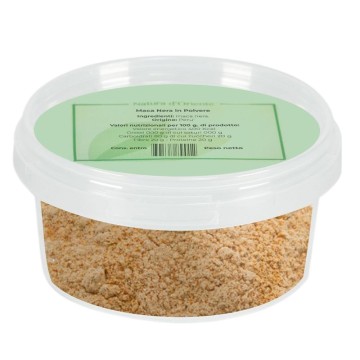Known as Ashwagandha or Indian ginseng, this herb has been known for centuries in Ayurvedic tradition and oriental medicine as a natural tonic. The plant, and especially the powder of the root, has been regarded as an herbal remedy for relieving physical and mental stress, boosting energy, and promoting well-being. It can be a resource for dealing with periods of tiredness and tension.
Withania Somnifera Ashwagandha: properties and benefits
The benefits of Ashwagandha include its capacity as a tonic-adaptogen for physical and mental fatigue. Induces a feeling of invigoration, energizes and promotes athletic performance, without causing agitation. This is why it is also known as "Indian ginseng". Its ability to reduce stress makes this plant a resource that helps the body cope with tensions and sudden changes. It acts on the activity of the mechanisms that regulate the response to fatigue, controlling the substances activated by stress. Its action can relieve agitation, and Ashwagandha is often used to counteract states of apprehension as a support for panic attacks. Furthermore, it is called "somnifera" because it reconciles the regular rhythm of sleep, calming agitation and difficulty falling asleep. Facilitates relaxation and mental well-being, in the most tiring periods, improving concentration and attention. The organic version of Withania Somnifera or Ashwagandha powder is excellent as a tonic even for those looking for a natural sports supplement. It can be taken to help improve sports performance during physical effort, promoting muscle strength and good oxygen absorption during intense sports activity (in aerobic conditions). Ashwagandha intake can promote concentration and cognitive functions, improving attention and mental performance. The tonic capacity also acts with antioxidant effects, which improve our immune defenses as well as cognitive well-being. Its properties can help protect cells from cellular damage caused by free radicals.
Origins and History of cultivation
The Ashwagandha plant is native to India and Southeast Asia. Today Ashwagandha is a shrub that today grows in different regions of Asia and Africa, especially in China, India, Sri Lanka, Pakistan and Afghanistan. His name is made up of two Sanskrit words: ashwa meaning "horse" and gandha meaning "smell". It can come from the horse smell that the grass gives off, or from the fact that it symbolizes the strength of a horse. It is also known as "Indian ginseng" due to its tonic-adaptogenic properties and with the name of "Indian winter cherry". For centuries, the populations of the Indian and eastern territories have used extracts or powder, obtained from the root or leaves of the plant, as natural remedies. In the herbal healing tradition of the Indian Ayurvedic system, Ashwagandha is considered a Rasayana (tonic). It has been used in the past to treat anxiety and fertility issues, as a nerve tonic to support vitality. In Ayurveda this Rasayana is an adaptogen/stress reliever, considered beneficial to debilitated people. The plant is present in Ayurvedic texts, which date back to around 200 BC. even if the Ayurvedic tradition is about 5,000 years old and probably this remedy was already known. It is also present in the medical culture Unani, whose origins date back to ancient Greece, where it was called asgandh, cultivated in Greece and the Middle East The botanical term Withania derives from the commemoration of a scientist Henry T. Maire Silvertop Witham (1779-1844 ), while somnifera derives from the sleeping and tranquilizing properties of the plant. Traditionally Ashwagandha is usually available as churna, a finely sieved powder that can be mixed with water, honey or ghee (Indian clarified butter). In recent years, Ashwagandha has gained popularity in Western countries, also becoming a popular drink as a dietary supplement. Appreciated in particular in the version of Ashwagandha in organic powder, coming from organic crops.
<h2style="text-align: justify;">Plan
The ashwagandha plant is a small shrub with yellow flowers botanically known as Withania somnifera, from the Solanaceae family. It grows in dry subtropical regions, as a perennial plant in its habitat of open areas. It also does well in pots as long as it is grown in an area that gets full sun and has good drainage. Prefers sandy soil, flowers and fruits in the first year. The alternate leavesthey are opposite to the flowering shoots, and show an intense smell, like the roots.
Nutritional values of Withania Somnifera Ashwagandha
The powder contains various nutritional substances such as carbohydrates, proteins, fibers and low fat. The active substances of Withania somnifera include the withanolides as the main phytochemical constituents: withaferin A, alkaloids, steroidal lactones (withanolides, withaferins), saponins, etc. Withanolides are similar to the ginsenosides of Panax ginseng in structure, that's why Ashwagandha is also called Indian ginseng.
How to consume Ashwagandha powder
Withania Somnifera powder can be taken dissolved in a glass of water or it can be consumed by adding it to fruit juices, smoothies, fruit or vegetable centrifuges. For information on the doses of Ashwagandha powder, it is always advisable to contact an expert in naturopathy, phytotherapy or herbal medicine. On average, the dosage is related to the objectives to be achieved, with a dose of 2-5 grams per day to improve physical and mental performance; the daily dosage should be divided into 2-3 doses throughout the day. Ashwagandha can be taken at any time of day, from morning to evening based on personal preferences.
Withania Somnifera - Ashwagandha: side effects and contraindications
No particular contraindications are known, but it is necessary not to exceed the doses, and avoid using it for too long continuous periods (over 3 months). Excessive intake can cause laxative effects, nausea, gastrointestinal disturbances, drowsiness. Ashwagandha is not recommended during pregnancy, lactation, or those taking sedative drugs.











 No reward points for this product.
No reward points for this product.






